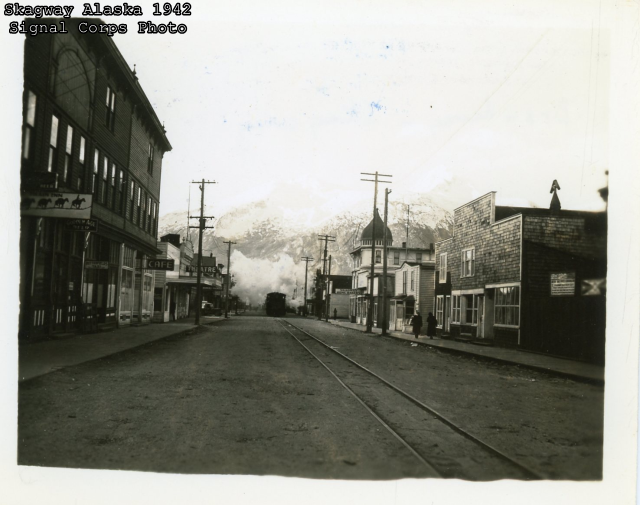
The grizzly stood erect at the back of the “small paneled Canadian truck” slapping it with is enormous paws, rocking it in every direction. Rounding a curve in his bigger truck, John Friese spotted the small truck parked by the side of the road, “shaking with movement in the back section.” It took him just a moment to spot the slap-happy grizzly causing the shaking.
Link to another bear story. “The Rude Bear”

In 1943 civilian contractors continued to work on the Alaska Highway, straightening and upgrading. Pederson Brothers Construction Company had brought John Friese north, and that winter the eighteen year old had a list of jobs as long as his arm.
This particularly frigid morning found him delivering supplies to another Pederson camp twenty-five miles up the road. He drove slowly and with great care. The Highway, he knew, could deceive a driver—looking smooth, covered by snow and permafrost until it suddenly “dipped into a wide crevice where part of it had slid down the mountain.”
Rounding a curve he spotted the small truck stopped by the side of the road. It “shook with movement in the back section”. It took a moment to see the grizzly, standing erect slapping the truck with its enormous paws.
The seven foot tall monster, “had already clawed through the rubber-covered wooden slats of the truck top.” And he had broken several windows. The driver scrambled around inside in raw panic trying to avoid the bear’s huge, furiously groping claws.

John edged his bigger truck closer to the action and yelled to the driver to open a side window. The French/Canadian Driver didn’t understand English.
John pulled right up next to the smaller truck and rolled down his passenger side window. “The terrified forty-year old man tunneled through the window of his cab, and into my truck. Off we roared.”
John looked in the mirror once to see the grizzly continuing to demolish the truck.


























